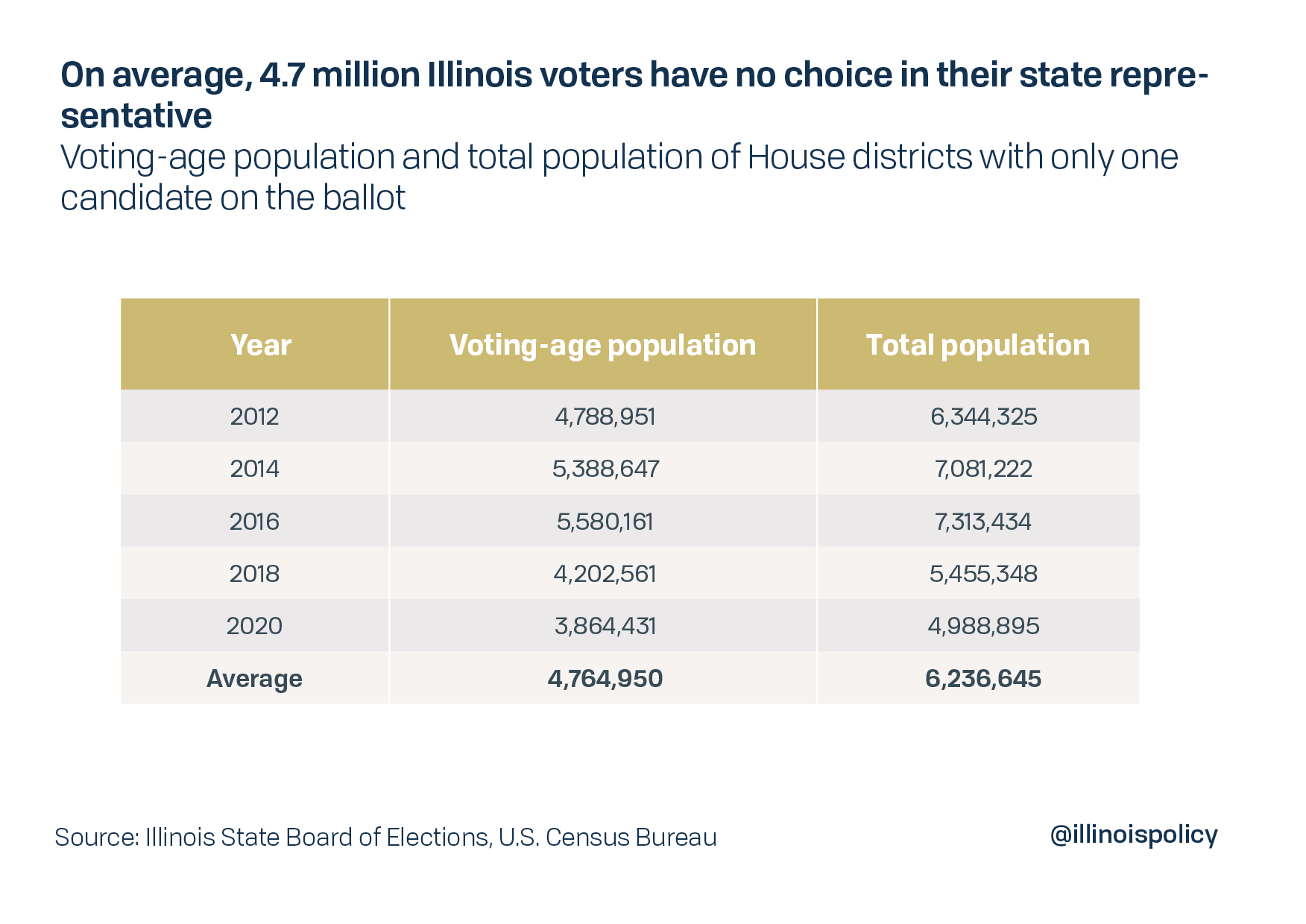(This article was published first at Illinois Policy Institute).
Under Illinois’ current legislative maps, each election had an average 4.7 million people who lived in districts with only one name on the ballot for the Illinois House of Representatives. Voters with one option have no real option.
From 2012-2020 under the current state legislative maps, nearly 50% of all Illinois House races were uncontested. The same was true for 2020 Illinois Senate races. Research shows uncontested elections increase the likelihood of corruption.
When politicians can’t be checked by voters, the only voices they hear are from lobbyists and special interests. Gerrymandered maps feed into Illinois’ cycle of corruption, and that costs Illinois’ economy upwards of $556 million a year.

As the courts wrestle with the new legislative maps that will determine how competitive state elections will be during the next decade, Illinoisans should remember the politicians who again gerrymandered their own districts to their own advantage. And they should remember the governor who promised to end gerrymandering, but buckled when his moment came.
